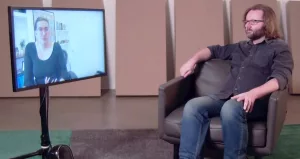David Rokeby, a part of the vanguard of electronic, video, and installation art since the early 1980s, delivers an artist talk that delves deeply into the evolving interplay between humans, technology, and artificial intelligence. Living and teaching in Toronto at Ryerson University’s RTA School of Media, Rokeby has consistently explored themes of digital surveillance and the perception of time through his art, a concept he refers to as ‘process time.’
During his presentation, Rokeby recounts his artistic journey, starting from his work in the 1980s that researched the interaction between human bodies and machines. This early work laid the foundation for his 1990s projects, which began to question the implications of these interactions for artificial intelligence. He reflects on the relatively primitive state of AI during his initial explorations compared to today’s advanced deep learning technologies.
A significant part of his talk focuses on his installation, “Very Nervous System” which uses cameras to track movement and create music in real-time, fostering a dynamic interaction between the body and technology. This piece, Rokeby explains, not only reflects the movements it detects but also generates a responsive, immersive environment that explores the blurred boundaries between the physical self and digital responses.
Rokeby discusses the philosophical and existential questions that arise from his engagements with technology—particularly how consciousness and bodily experience influence and are influenced by digital systems. He is intrigued by the immediate, often surprising interactions between human intent and technological feedback, which challenge traditional notions of control and agency.
Rokeby questions the future of artificial intelligence in relation to the human body. He speculates on the cultural implications of AI systems that lack a bodily perspective, suggesting that a comprehensive understanding of intelligence might remain elusive without integrating the profound human experience of being embodied. His reflections prompt a broader contemplation on the role of the body in digital and cultural contexts, emphasizing the persistent relevance of physical presence in an increasingly virtual world.

